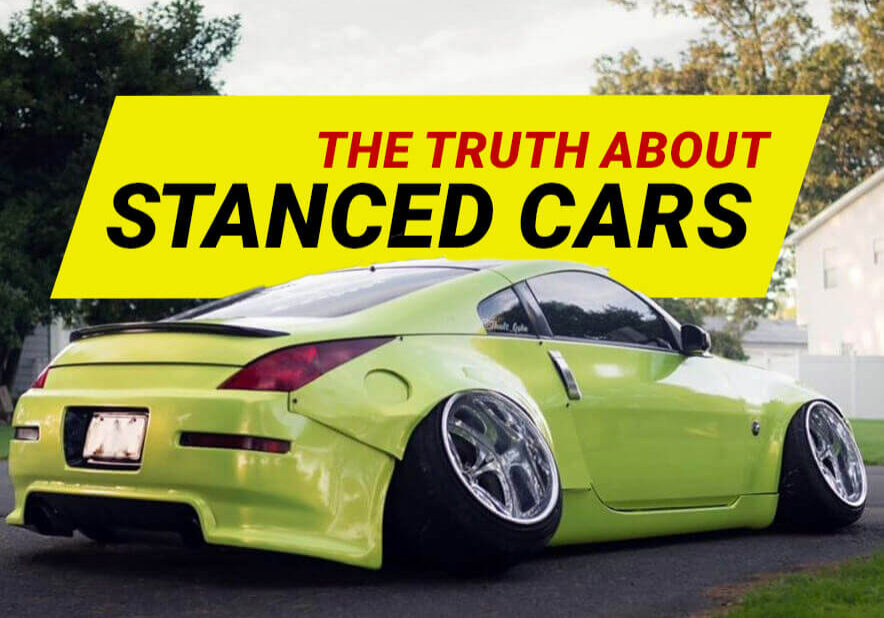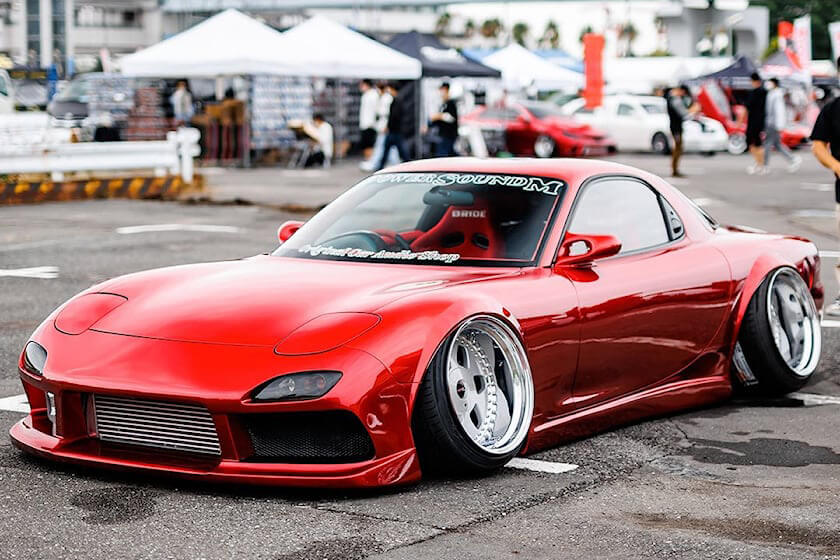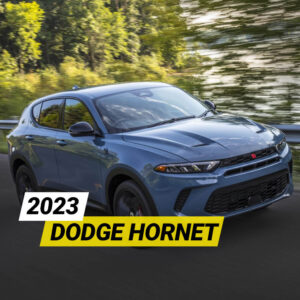The Truth About Stanced Cars
Everything you need to know about getting low, covering popular models, and tips for perfect stance.
Updated: February 29, 2024 // Car Culture

Home // Car Culture //
Stancing as gained considerable fame among car buffs, flaunting a one-of-a-kind and bold style that stands out from the pack. We'll start by defining a stanced car and how it differs from other customized vehicles. Following that, we'll go over how to get the exact posture by modifying ride height, tire camber, and wheel sets. We will also discuss how a well-stanced car improves handling and looks.
What The Heck is a Stanced Car?

CarBuzz
For the uninitiated, a stanced car might seem like any other modified vehicle, but for those in the know, it's a statement. It's a vehicle that’s been intentionally tweaked for a unique appearance, characterized by a lowered suspension, a noticeable negative camber in the wheels, and often, stretched tires. This isn’t just about making your car look a certain way; for many, it's a lifestyle.
The Art of Lowering the Suspension
Every stanced car starts with a lowered suspension. By using components like lowering springs, coilovers, or air suspension systems, the vehicle gets that much-desired aggressive appearance. Lowering the car lowers its center of gravity, improves its posture, and improves looks.
Getting That Negative Camber Just Right
One of the standout features of a stanced car is its wheel tilt, known in the industry as negative camber. This is where the tops of the wheels angle inwards. While it offers a distinct look, negative camber also enhances grip during fast cornering, optimizing the tire's contact with the road.
Why Stretch the Tires?
Stretched tires can seem counterintuitive, but they complete the stanced car look. By fitting a tire on a wider rim than recommended, the tire gets, well, stretched. This not only enhances the aesthetic but, when done correctly, can improve the vehicle's handling, reducing sidewall flex during intense cornering.
In summary, a stanced car is all about combining form and function to create an eye-catching vehicle with enhanced handling capabilities. By lowering ride height, increasing negative camber angles, and stretching tires onto wider rims, enthusiasts can achieve the perfect balance between aesthetics and performance.
Stanced cars offer a customized method of personalizing your vehicle, allowing it to stand out from the crowd.
How to Properly Stance a Car

Fitment industries
Stancing your car can give it an aggressive look and improve its handling capabilities. To achieve the perfect stance, follow these 5 steps:
1. Choose the Right Suspension Components
Selecting the appropriate suspension components is crucial for a properly stanced car. Some popular options include lowering springs, coilovers, and air suspension systems.
2. Adjust Ride Height
The key to achieving that desired stance is lowering your car's ride height. This not only enhances aesthetics but also lowers the center of gravity for better handling performance in sports cars.
3. Modify Tire Camber
To get that signature negative camber look, you'll need to adjust your wheel alignment settings by installing adjustable control arms or camber plates depending on your vehicle's suspension design.
Determine Your Desired Negative Camber Angle:
- Mild: -1° to -2° (recommended for daily driving)
- Moderate: -2° to -4° (ideal for occasional track use)
- Aggressive: More than -4° (strictly show cars or drifters)
4. Select Proper Wheels and Tires
Pick wheels with proper offsets that sit flush with your fenders while providing adequate clearance from inner suspension components when turning at full lock; this may require spacers or custom-made wheels if necessary. Additionally, choose tires carefully as stretched tires are often used in extreme stances which can be dangerous due to reduced contact patch and increased risk of tire failure.
5. Professional Installation and Alignment
For the best results, it's highly recommended to have a professional mechanic install your suspension components and perform a proper wheel alignment. This ensures optimal performance, safety, and longevity for your stanced car.
Customizing a vehicle with stancing can be an exhilarating experience, allowing it to stand out from the rest. With that said, let's explore some of the benefits associated with stancing a car in our next heading.
Reaping the Benefits of Stancing Your Car

StanceNation
Stanced cars aren't just about looks. They offer enhanced handling, a unique aesthetic, and, for some models, optimized performance without compromising on comfort or safety.
Improved Handling
A properly stanced car can provide better handling and cornering capabilities due to its lower center of gravity and negative camber. The lowered ride height reduces body roll during turns, allowing for more precise control and quicker response times. Additionally, negative camber increases tire contact with the road surface during cornering, providing enhanced grip and stability.
Better Looks
One of the most apparent benefits of stancing a car is its striking appearance. A lowered vehicle with aggressive wheel fitment creates a unique aesthetic that sets it apart from other vehicles on the road. This visual appeal attracts attention from fellow enthusiasts and casual observers alike.
But, Beware the Dangers
Like any modification, stancing comes with its set of challenges. From potential tire wear due to negative camber to potential suspension damage and even legal implications, it's essential to know what you're getting into.
Potential Safety Risks
- Tire wear: A properly stanced car often has negative camber, which means that the wheels tilt inward at the top. This can lead to uneven tire wear, especially on stretched tires. It's essential to regularly check your tires for signs of excessive wear and replace them as needed.
- Suspension damage: Lowering springs or coilovers used to achieve a lower ride height may put additional stress on suspension components like bushings and ball joints. Make sure you choose high-quality parts designed for your specific vehicle model when modifying its suspension system.
- Rubbing issues: If not done correctly, lowering your car too much could cause rubbing between tires and fenders or other body parts during turns or over bumps in parking lots. Properly rolling fenders is one way to avoid these problems.
Laws Concerning Stanced Cars
In addition to safety concerns, there are legal considerations surrounding stanced cars as well. Some states have strict laws regarding modifications like excessively low ride heights or extreme negative camber angles that might make certain stance setups illegal on public roads. Be sure to research your local laws and regulations before committing to a stanced car project.
How to Minimize the Dangers
While there are some risks associated with stancing, you can take steps to minimize them:
- Choose quality parts: Invest in high-quality suspension components that are designed for your specific vehicle model. This will help ensure proper fitment and reduce the risk of damage or failure.
- Maintain proper alignment: Regularly check your wheel alignment and make adjustments as needed. A properly aligned car is not only safer but also more enjoyable to drive.
- Avoid extreme modifications: While it might be tempting to go all-out with negative camber angles or ultra-low ride heights, consider keeping things within reasonable limits for safety reasons.
In conclusion, while stancing a car can provide both aesthetic and performance benefits, it's essential to understand the potential dangers involved. By choosing quality parts, maintaining proper alignment, and adhering to local laws regarding automotive modifications, you can enjoy a stylish stanced car without compromising on safety.
5 Tips for Lowering Your Ride
- Invest in Quality: The right components make all the difference.
- Understand Tire Camber: Negative camber can be a game-changer, but it's essential to get the degree just right.
- Strike a Balance with Ride Height: Too low can cause functional issues, too high, and you're missing the point.
- Know Your Tires: If you’re stretching them, ensure proper installation and regular pressure checks.
- Stay Updated: The world of stancing is ever-evolving. Keep abreast of trends, safety updates, and community insights.
FAQs About Stanced Cars
Cars are stanced to look aggressive and improve handling. Lower suspensions, larger wheels, and negative camber angles improve cornering grip in stanced cars. Showing or expressing personal style, some enthusiasts posture their automobiles.
Stancing provides increased corner grip through wider tires and negative camber angles, but it's not perfect for all drifting. Over-lowering may reduce suspension travel for optimal weight transfer during drifts. Coilovers built for drifting perform better than "stancing" a car.
Stancing lowers suspension travel and stiffens, reducing ride comfort. Excessive negative camber angles can cause premature tire wear, higher rolling resistance reduces fuel efficiency, scraping on uneven surfaces or speed bumps, and legal difficulties depending on local rules.
Cambering is altering wheel alignment to slant the top inward or outward. Racing and drifting drivers apply negative camber to better handling because it increases tire contact patch during cornering loads. Unmanaged negative camber can cause uneven tire wear.
Disclaimer: The writers of this article may have used artificial intelligence to help them with some of the material. It should not be a replacement for professional help.
Sources:
- Terrell, J. (2021, January 11). Stanced Drift Cars – Why, and How? Drifted.com. https://www.drifted.com/stanced-cars/
- Slinger, M. (2023, April 17). Stance 101: All You Need to Know. PASMAG - Performance Auto & Sound 20th Anniversary! https://www.pasmag.com/style/style-installs-reviews/stance-101-all-you-need-to-know
- DeSantis, G. (2021, January 16). Slammed Culture is the Coolest Trend That’s Ruining Your Car. Slammed Culture Is the Coolest Trend That’s Ruining Your Car. https://www.motorbiscuit.com/slammed-culture-is-the-coolest-trend-thats-ruining-your-car/
- The Secrets Of Stance! - Popular Hot Rodding Magazine. (2012, April 1). MotorTrend. https://www.motortrend.com/news/1204phr-the-secrets-of-stance/
- How to slam your car. (2017, December 7). Red Bull. https://www.redbull.com/ie-en/how-to-stance-your-car
- When Stance Stops Making Sense. (2016, August 5). DrivingLine. https://www.drivingline.com/articles/when-stance-stops-making-sense/
- Why We All Owe Stance Culture A Huge Apology. (2015, October 16). Jalopnik. https://jalopnik.com/why-we-all-owe-stance-culture-a-huge-apology-1736757215






